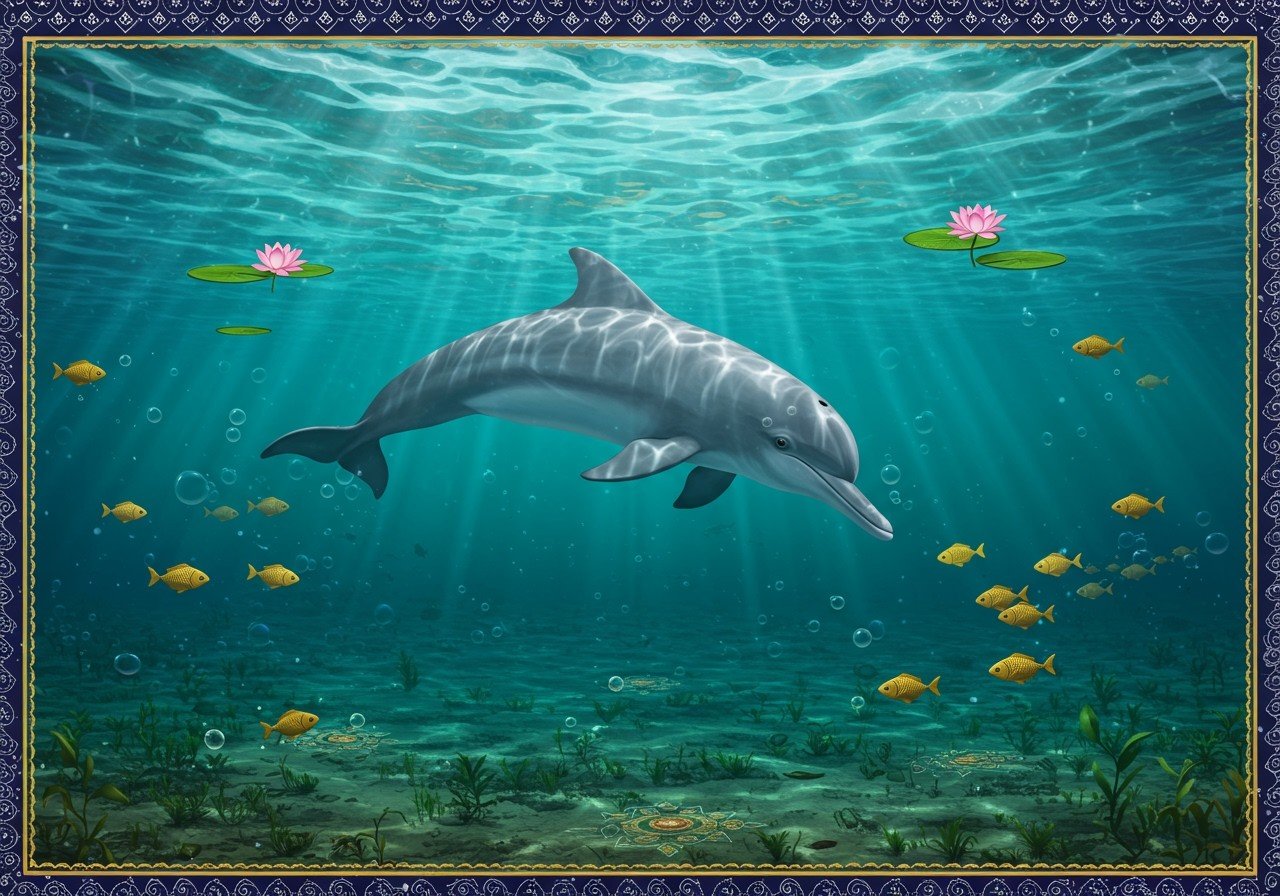
The Indus River dolphin, a unique and fascinating aquatic mammal, resides exclusively in the Indus River system in Pakistan and the River Beas in Punjab, India. This blog delves into their biology, the perils they face, and the ongoing conservation efforts crucial for their survival and the health of the river ecosystem.
Biology of the Indus River Dolphin
The Indus River dolphin (Platanista gangetica minor) possesses distinct physical attributes. Their elongated, pointed beaks and small eyes are ideally suited for navigating the murky waters they inhabit. Echolocation, a biological sonar, enables them to traverse and hunt in these turbid river environments. They favor deep river channels and slower currents.
Diet and Feeding Behaviors
Fish and crustaceans form the core of the Indus River dolphin’s diet. Their echolocation skills are essential for locating prey in the opaque river depths. Their feeding strategies are finely tuned to their freshwater habitat.
Reproductive Patterns
Comprehending the reproductive patterns of these dolphins, including their calving intervals and maternal care practices, is vital for conservation initiatives. Their lifespan and factors influencing their longevity are equally crucial for their continued existence.
Indus River Dolphin Facts
The Indus River dolphin is among the few remaining freshwater dolphin species. Their historical range, once extensive, has dramatically shrunk. They hold cultural importance in the regions they inhabit.
Population and Conservation Status
The Indus River dolphin population has experienced a concerning decline in recent decades, leading to its classification as endangered by the IUCN. Their presence serves as a key indicator of the river ecosystem’s overall health. As the second most endangered freshwater dolphin globally, their survival is a critical concern.
Threats to the Indus River Dolphin
Multiple factors contribute to the dwindling numbers of Indus River dolphins. Habitat fragmentation resulting from dam construction and water extraction significantly impacts their environment. Pollution from industrial and agricultural runoff degrades water quality, jeopardizing dolphin health.
Accidental Bycatch and Climate Change
Accidental entanglement in fishing nets causes injuries and fatalities. Climate change further exacerbates the situation by altering river flow patterns and increasing the frequency of extreme weather events, disrupting their habitat.
Human Encroachment and Reduced Prey Availability
Human encroachment and river traffic pose substantial threats. Overfishing and habitat degradation diminish the availability of prey crucial for the dolphins’ sustenance.
Indus River Dolphin Conservation Efforts
Numerous initiatives are underway to protect the Indus River dolphin. Government regulations and international collaborations play a pivotal role in safeguarding their habitat. Conservation efforts, initiated by WWF-Pakistan in 1992, include a dolphin rescue program in collaboration with the Sindh Wildlife Department to safely return stranded dolphins to the main river channel. WWF-India is also working towards the conservation of this species in India. The Indus River Dolphin Conservation Project aims to maintain a viable population of this species.
Community-Based Efforts and Scientific Research
Community-based initiatives focus on reducing pollution and promoting sustainable fishing practices. Scientific research provides valuable insights into dolphin behavior and habitat requirements, informing effective conservation strategies.
Captive Breeding Programs and Public Awareness Campaigns
Captive breeding programs offer a potential avenue for bolstering wild populations. Public awareness campaigns and educational programs are essential for fostering local support for conservation endeavors.
Embrace the Sacred Connection: Puja Essentials for River Conservation at Poojn.in
The Indus River holds profound spiritual significance within Hinduism, traversing regions sacred to numerous deities. At Poojn.in, we offer a curated selection of items to honor the divine connection between water bodies and Hindu traditions:
- Lord Vishnu Worship Items: As the protector of water bodies, Lord Vishnu is closely associated with aquatic life. Our authentic brass and copper items for Vishnu puja help maintain this sacred connection. We offer a wide variety of products related to Lord Vishnu and other deities.
- Lord Krishna Puja Essentials: Lord Krishna’s connection to water bodies underscores the importance of river conservation. Discover complete Krishna puja sets and exquisite dress materials for Laddu Gopal at our store. Explore our collection of Krishna Puja essentials to enhance your devotional practices.
- Lord Indra Worship Materials: As the god of rain and water, Lord Indra plays a vital role in the health of river ecosystems. We provide traditional items for Indra puja, enabling you to seek blessings for water conservation. Discover a range of incense sticks and other puja materials to deepen your connection with the divine.
Our products support traditional worship while promoting awareness about sacred water bodies like the Indus River. Visit Poojn.in to explore our collection of authentic puja items that help maintain the spiritual connection with our rivers and their inhabitants.
Conclusion
The Indus River dolphin represents a valuable part of our natural heritage. By understanding their biology, acknowledging the threats they confront, and actively supporting conservation initiatives, we can contribute to securing their future. Every action, from supporting relevant policies to participating in community projects and raising awareness, makes a difference. Together, we can ensure the continued flourishing of the Indus River dolphin in its natural habitat for generations to come.
Learn more about eco-friendly Ganesh Chaturthi celebrations: Eco-Friendly Ganesh Chaturthi: A Guide to Sustainable Celebrations
Prepare for Ganesh Chaturthi with our comprehensive checklist: Ganesh Chaturthi Checklist: Your Guide to a Smooth Festival


